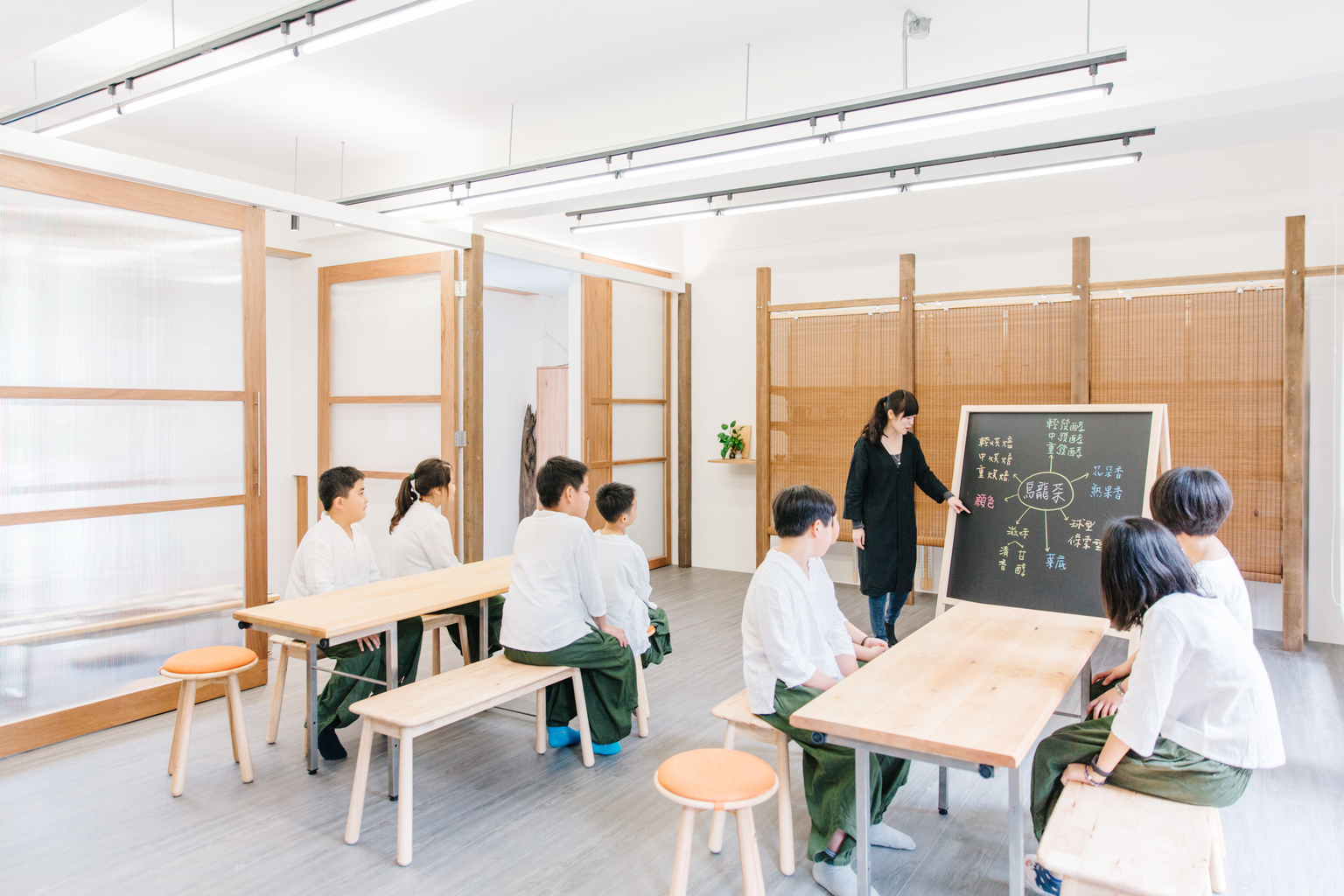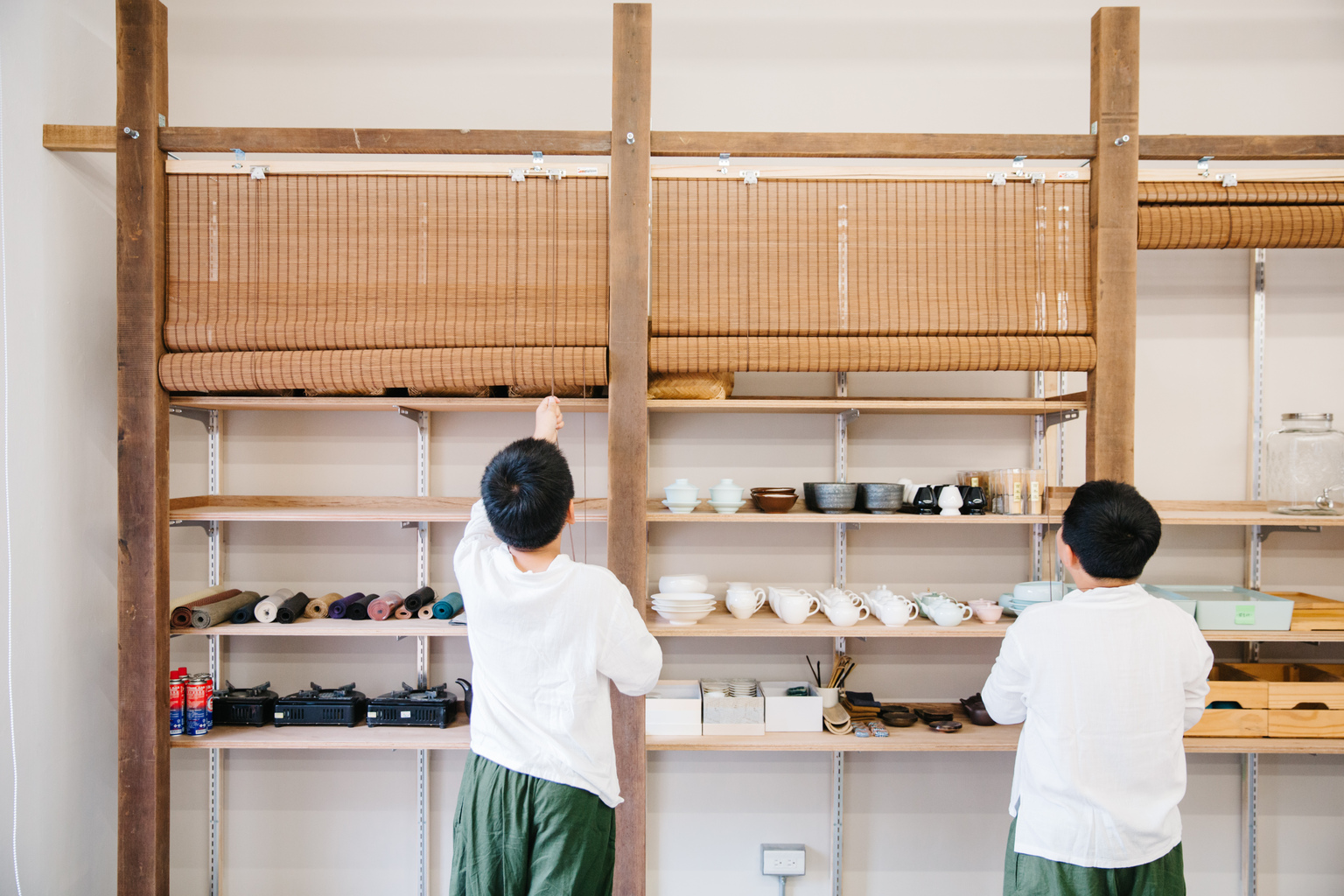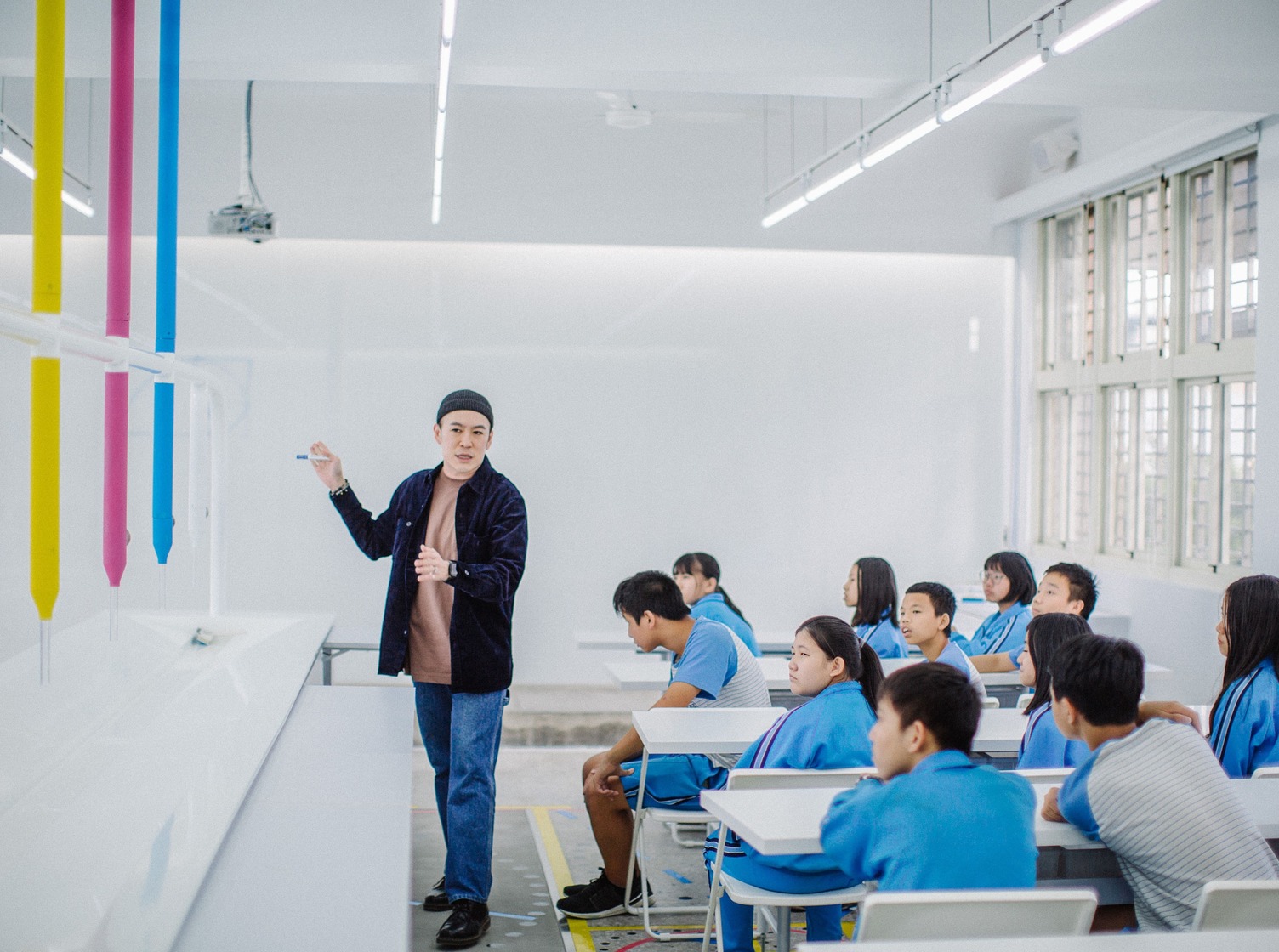Using “Tea” to Establish for Children Warm Link with Hometown before They Leave
-Exclusive Interview with former Principal Hsu Ying-Chieh of Taihe Elementary School
“I never thought that the tea ceremony classroom buried under mud and landslide during Typhoon Morakot would one day become such a beautiful space,” said sentimentally Hsu Ying-chieh, former principal of Taihe Elementary School.

Preserve for the Campus Devastated by Typhoon a Beautiful Place for Tea Ceremony
Turning the clock back to over a decade ago, Hsu was a teacher at Taihe Elementary School in Meishan Township, Chiayi, when Taiwan was devastated by Typhoon Morakot, the most disastrous storm in half a century. Hsu and colleagues and parents spent a month to somewhat clean the classrooms that had been flooded by mudslide; ten years later, after being transferred to various schools, Hsu applied to return to Taihe Elementary School as its principal. It was then that he came across the official letter regarding “Design Movement on Campus,” and he quickly applied, hoping to preserve for the disaster-hit campus a beautiful place for tea ceremony.

Taihe Elementary School is located in the Meishan tea producing area, and over a decade ago, it responded to the development of the community’s tea industry by launching a weekly tea ceremony class. “Taihe Elementary School is located in a community where the tea industry has over 30 years of history, and therefore our tea ceremony class offers rich content and strong continuity, and never stopped when there was a new principal.” Unfortunately, the tea ceremony classroom that had been devastated by typhoon was old and humid, and used as a warehouse and classroom for nature, social studies, and arts and crafts. Consequently, the classroom was crowded and the traffic flow was messy; when children went to get hot water, they either bumped into others or knocked over tea ware on desks, and the classroom was no way near the ideal tranquil and elegant space of tea ceremony.
What troubled the school even more was that, due to its remote location, Taihe Elementary School had limited fund and no design team was willing to travel all the way here. “Design Movement on Campus” caught the attention of Hsu Ying-chieh immediately because it was executed by TDRI under the commission of Ministry of Education, which solved the two major pain points of schools in remote areas all at once by providing fund and inviting professional design teams. “We really wanted to take this opportunity to build an elegant tea ceremony space for our students, so that they can really learn the art and Zen philosophy of their hometown tea.”

Subtractive Thinking Is not just about “Removing,” but also Innovative Thinking
“Wanting to change” was just a beginning, “how to change” and “changing into what” were the things repeatedly discussed by the school, TDRI, and design team “Liao Johnson Design Studio X Group C” throughout the process. The main issue was the two small isolated spaces the design team specifically designed for the classroom.
“We were very intrigued by the ‘subtractive thinking’ emphasized by the project,” but our imagination of ‘subtraction’ in the beginning was to remove the walls for a large open area with broad wooden floor; we did not understand why they added two smaller spaces,” said Hsu. “Actually, we insisted on that for quite some time, but during a meeting, advisor Johnny Chiu said in a very soft voice: ‘These two spaces are the very bright spots of the entire design, and it would be a pity to remove them.’ Suddenly, I realized that renovation was perhaps not just about removing things, and the keys were innovation and creation that came after removal, so we might as well give it a try!”

Children Naturally Calm down in the renovated Tranquil Rooms
This was how the three sides reached consensus, and the construction officially began. Although the classroom’s pillar was found to have a huge crack and the reinforcing steel was exposed and rusted when the construction team arrived, all three sides did whatever they could, applying for repair fund and working on the administrative procedure to postpone the construction, and strived for the shared belief of “preserving for children a beautiful classroom of tea ceremony” to overcome the bumps and challenges along the way.
After the construction, the old messy, wet, and cold tea ceremony classroom is now warm and bright, and has systematic storage space concealed behind Japanese curtains; by reorganizing the space and installing the floor, the restriction of only brewing tea on desks in the past has been eliminated, and teachers can now be more creative when teaching children how to set up a ceremony. As for the decision the school found slightly risky—the two small spaces—they were separated by two semi-penetrative acrylic doors and have become the bright spots of the renovation. “In the past, the classroom was in a mess, and children could not settle down when they prepared for tea ceremony; now, the two tranquil small spaces have become where children can spend time alone in tranquility and brew tea. In the spaces, children naturally do things lightly and can more easily calm and settle down.”
This alone time with self, enjoying a cup of tea, is the gift to the children of Taihe Elementary School from the school, TDRI, and LJS Design Workshop X Group C—after all, there is no junior high school in the mountain, and after they graduate, the children of Taihe Elementary School have to leave hometown and attend schools elsewhere. They will inevitably feel lonely when they are away, but with the memory of learning tea ceremony at Taihe Elementary School, they can simply prepare a cup of tea and revisit the tea ceremony classroom, in which they had held a teapot and sat in fragrance, whenever they are alone, and in that space created by their teachers and designers are people who care about them, and watch over them from afar.




